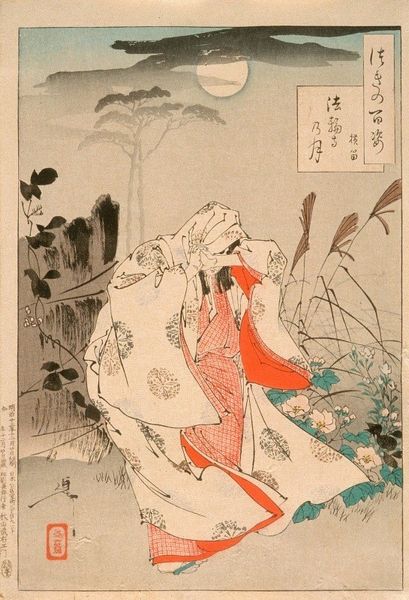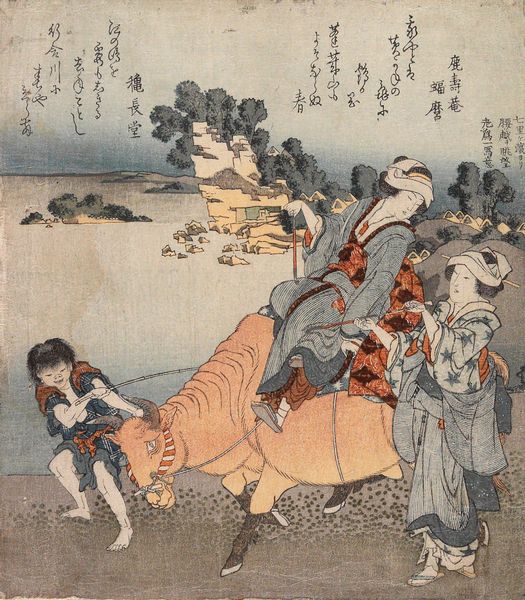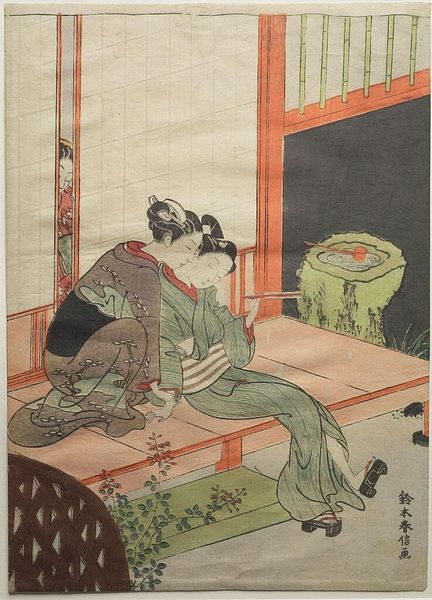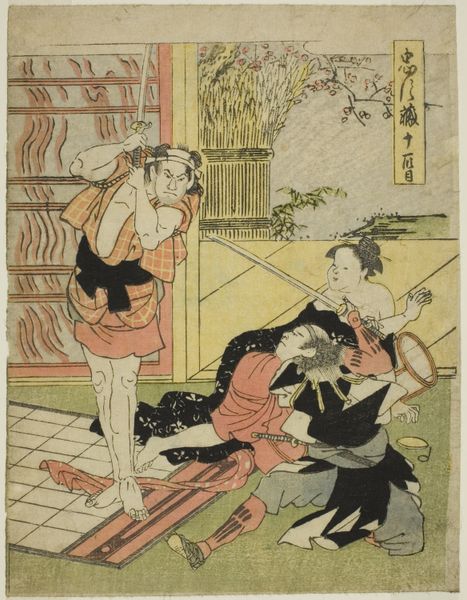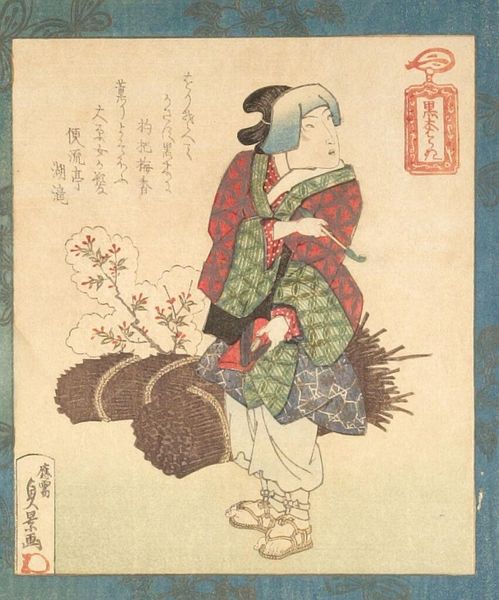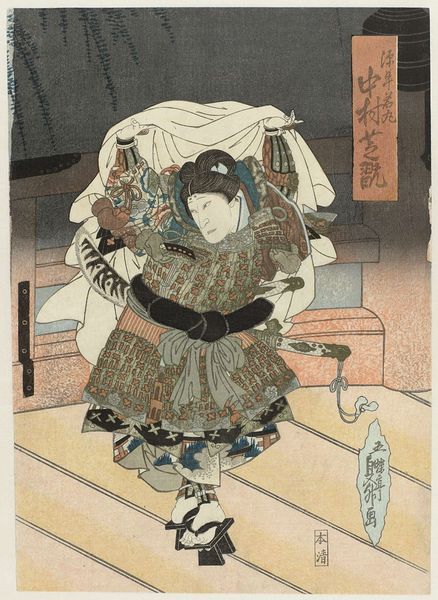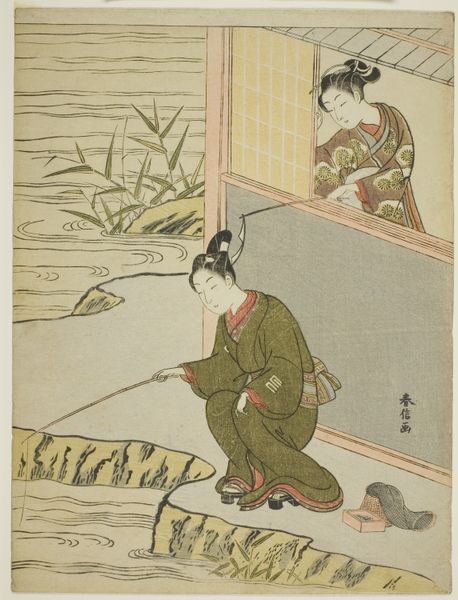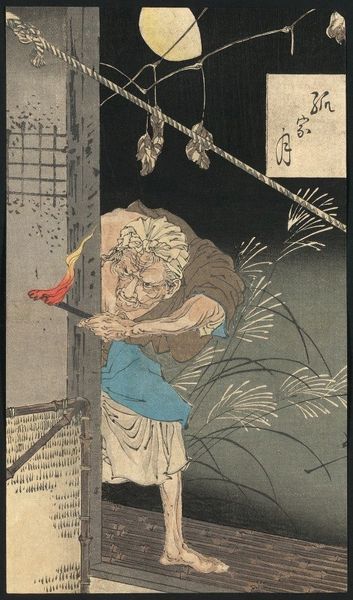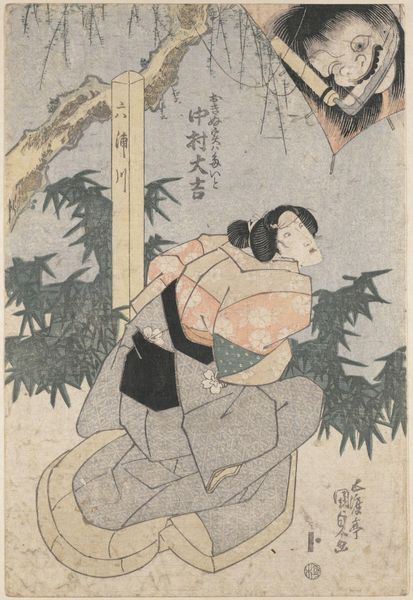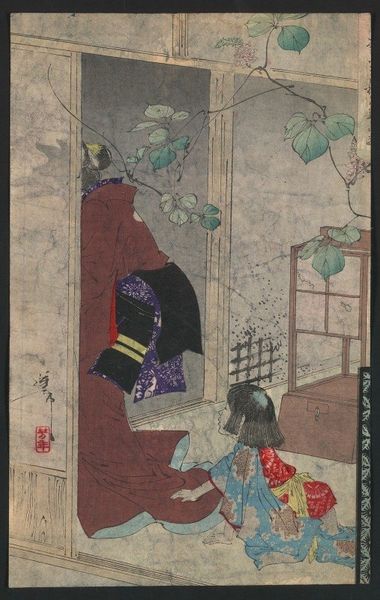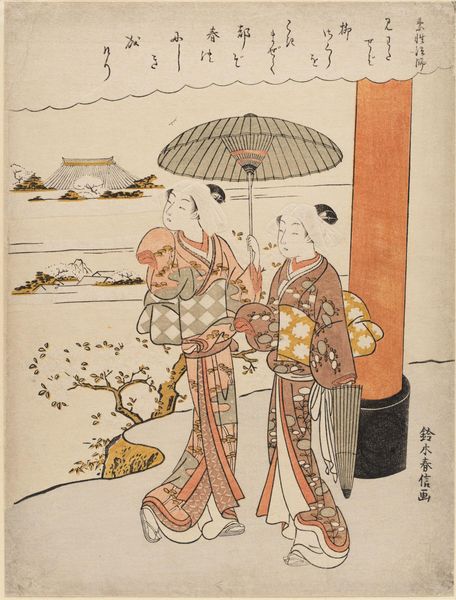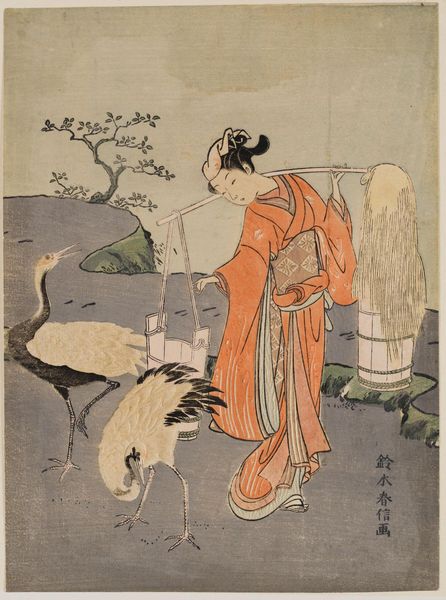
The Wicked Thoughts of the Priest Raigō of Miidera Transform Him into a Rat 1891
0:00
0:00
Copyright: Public Domain: Artvee
This woodblock print by Tsukioka Yoshitoshi was made in Japan in the late 19th century. It depicts a priest of Miidera temple, Raigō, transforming into a rat as punishment for his wicked thoughts. Yoshitoshi’s image creates meaning through the visual codes of Japanese folklore. The image is a commentary on the social structures of its time, where religion and morality are deeply intertwined. The transformation of the priest into a rat, a symbol of greed and destruction, can be interpreted as a critique of the corruption within religious institutions. Was Yoshitoshi self-consciously conservative or progressive? Understanding this image requires a deep dive into the social and institutional context of Meiji-era Japan. Researching the history of Buddhism, the role of temples, and the cultural significance of animals might help us to better understand the meaning of the artwork. The meaning of art is always contingent on its social and institutional context.
Comments
No comments
Be the first to comment and join the conversation on the ultimate creative platform.
